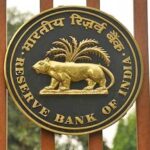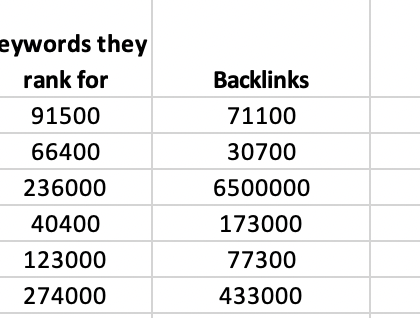Open banking refers to a financial concept and practice that allows third-party financial service providers to access and use financial data from banks and other financial institutions through Application Programming Interfaces (APIs). This data sharing enables these third-party providers to develop new financial products and services, often tailored to meet specific consumer needs.
Key aspects of open banking include:
- Data Sharing: Banks and other financial institutions share customer-permissioned financial data securely with third-party providers through APIs.
- Innovation: Third-party developers can create new financial products and services, such as budgeting apps, investment platforms, or loan comparison tools, using the data provided by banks.
- Competition: Open banking fosters competition within the financial industry by allowing new entrants to offer innovative products and services, potentially leading to better options and lower costs for consumers.
- Consumer Control: Customers have control over their financial data and can choose which third-party providers they want to share it with, as well as revoke access at any time.
- Regulation: Open banking initiatives are often regulated by governmental or industry bodies to ensure data security, privacy, and fair competition among financial service providers.
Overall, open banking aims to promote innovation, competition, and consumer empowerment in the financial sector by enabling secure data sharing among banks and third-party providers.
Some conceptual examples to illustrate the idea of open banking:
- Personal Financial Management (PFM) Apps: Imagine you want to use an app to manage your finances more effectively. With open banking, you can link your various bank accounts, credit cards, and investment accounts to the app securely. The app can then analyze your spending patterns, provide budgeting advice, and offer insights into your financial health by accessing your transaction data from different banks.
- Loan Comparison Platforms: Let’s say you’re looking to take out a personal loan. Instead of visiting multiple bank websites to compare loan offers, you can use a loan comparison platform that utilizes open banking. By granting permission, the platform can access your financial information from various banks and analyze your creditworthiness. It can then provide personalized loan options from different lenders, along with their interest rates, terms, and eligibility criteria, all in one place.
- Payment Initiation Services: Suppose you’re shopping online and want to make a payment using your bank account. With open banking-enabled payment initiation services, you can authorize a third-party payment provider to initiate a direct bank transfer on your behalf. This means you don’t need to disclose your bank details to the merchant, and the payment can be made securely from your bank account without relying on credit cards or other payment methods.
- Savings and Investment Apps: Consider a scenario where you’re interested in investing but find it challenging to keep track of your investments across multiple accounts. Open banking allows investment apps to aggregate data from your various investment accounts, including stocks, mutual funds, and retirement accounts. By analyzing this data, the app can offer personalized investment recommendations, portfolio management tools, and insights to help you make informed investment decisions.
- Business Accounting Software: For businesses, open banking can streamline financial processes and improve cash flow management. Accounting software can integrate with bank APIs to automatically import transaction data, reconcile accounts, and generate financial reports in real-time. This automation eliminates the need for manual data entry and ensures accuracy in financial record-keeping, helping businesses make better-informed decisions and manage their finances more efficiently.
These examples illustrate how open banking enables the development of innovative financial products and services that leverage customer-permissioned data sharing to improve financial management, decision-making, and overall user experience.
Some specific examples of apps and websites that utilize open banking principles to provide various financial services:
- Personal Financial Management (PFM) Apps:
- Mint: Mint is a popular PFM app owned by Intuit that allows users to track their spending, create budgets, and set financial goals. It aggregates financial data from bank accounts, credit cards, loans, and investments to provide insights into users’ financial health.
- Personal Capital: Personal Capital offers both PFM and wealth management services. It aggregates financial accounts, analyzes spending patterns, provides investment advice, and offers tools for retirement planning and portfolio management.
- Loan Comparison Platforms:
- Credible: Credible is a loan marketplace that allows users to compare personalized loan offers from multiple lenders. It provides a streamlined process for finding and applying for loans, including personal loans, student loans, mortgages, and refinancing options.
- BankBazaar: BankBazaar is an online platform that enables users to compare and apply for various financial products, including loans, credit cards, insurance, and investment products. It offers personalized loan recommendations based on users’ financial profiles and requirements.
- Payment Initiation Services:
- Klarna: Klarna is a payment service provider that offers various payment solutions, including “Pay Now” and “Pay Later” options. It allows users to make online purchases and initiate payments directly from their bank accounts, without the need for credit cards.
- Trustly: Trustly is a payment initiation service that enables secure bank transfers directly from users’ bank accounts. It is commonly used for online purchases, peer-to-peer payments, and bill payments across Europe and North America.
- Savings and Investment Apps:
- Wealthfront: Wealthfront is a robo-advisor that offers automated investment management services. It uses algorithms to create and manage diversified investment portfolios for users based on their financial goals, risk tolerance, and time horizon.
- Betterment: Betterment is another robo-advisor that provides automated investment management and financial planning services. It offers personalized investment portfolios, tax-efficient strategies, and retirement planning tools to help users grow their wealth over time.
- Business Accounting Software:
- QuickBooks: QuickBooks is an accounting software developed by Intuit for small and medium-sized businesses. It integrates with bank APIs to import transaction data, reconcile accounts, track expenses, generate invoices, and manage payroll.
- Xero: Xero is cloud-based accounting software that offers a range of features for small businesses, including invoicing, bank reconciliation, expense tracking, and financial reporting. It connects with banks and financial institutions to automate data entry and streamline accounting processes.
These examples demonstrate how various apps and websites leverage open banking to provide innovative financial products and services that improve users’ financial management and decision-making capabilities.

While open banking offers several advantages, such as increased innovation, competition, and consumer empowerment, it also presents certain disadvantages, issues, threats, and problems that need to be addressed. Here are some potential challenges associated with open banking:
- Security Risks: Open banking involves sharing sensitive financial data with third-party providers, which can increase the risk of data breaches, identity theft, and unauthorized access. Weak cybersecurity measures or vulnerabilities in API systems could expose users’ financial information to hackers and fraudsters.
- Privacy Concerns: Open banking raises privacy concerns as it requires users to share their financial data with third-party providers. There’s a risk that this data could be misused or sold without users’ consent, leading to privacy violations and loss of control over personal information.
- Fraud and Scams: The interconnected nature of open banking ecosystems creates opportunities for fraudsters to exploit vulnerabilities in the system. Phishing attacks, account takeovers, and other fraudulent activities could jeopardize users’ financial security and trust in the banking system.
- Data Misuse: Third-party providers may misuse or mishandle users’ financial data for purposes other than those explicitly authorized by users. This could include targeted advertising, profiling, or selling data to third parties without users’ consent, leading to concerns about data ethics and transparency.
- Regulatory Compliance: Open banking initiatives are subject to complex regulatory frameworks aimed at protecting consumers’ interests, ensuring data security, and fostering fair competition. Compliance with these regulations can be challenging for banks, fintech firms, and other stakeholders, leading to increased compliance costs and regulatory uncertainty.
- Market Fragmentation: The proliferation of third-party providers and fintech startups in the open banking ecosystem could lead to market fragmentation, interoperability issues, and a lack of standardization. This fragmentation may hinder the seamless integration of financial services and limit the benefits of open banking for consumers and businesses.
- Customer Trust and Adoption: Building trust among consumers is crucial for the success of open banking initiatives. However, concerns about data security, privacy, and transparency may undermine customer trust and slow down adoption rates, particularly among more cautious or tech-savvy users.
- Unequal Access: Open banking could exacerbate existing inequalities in access to financial services, particularly among underserved or marginalized populations. If certain demographic groups lack access to smartphones, internet connectivity, or digital literacy skills, they may be excluded from the benefits of open banking, widening the digital divide.
Addressing these challenges requires collaboration among regulators, financial institutions, third-party providers, and consumers to establish robust security measures, ensure data protection, uphold privacy rights, and promote responsible data usage in the open banking ecosystem.



